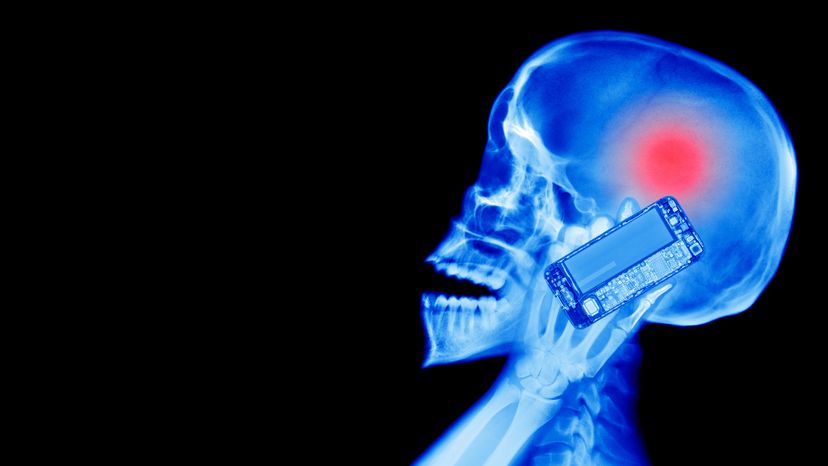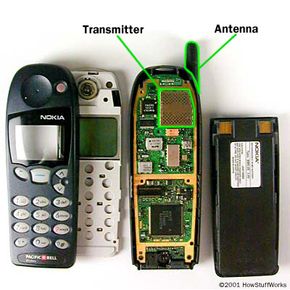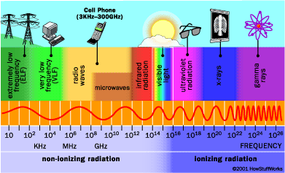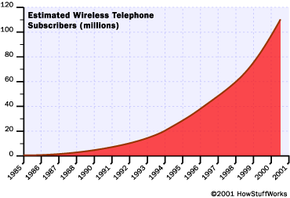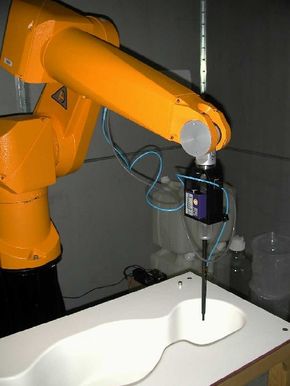In the late 1970s, concerns were raised that magnetic fields from power lines were causing leukemia in children. Subsequent epidemiological studies found no connection between cancer and power lines. A more recent health scare related to everyday technology is the potential for radiation damage caused by cell phones. Studies on the issue continue to contradict one another.
All cell phones emit some amount of electromagnetic radiation. Given the close proximity of the phone to the head, it is possible for the radiation to cause some sort of harm to the 118 million cell-phone users in the United States. What is being debated in the scientific and political arenas is just how much radiation is considered unsafe, and if there are any potential long-term effects of cell-phone radiation exposure.
There are two types of electromagnetic radiation:
- Ionizing radiation - This type of radiation contains enough electromagnetic energy to strip atoms and molecules from the tissue and alter chemical reactions in the body. Gamma rays and X-rays are two forms of ionizing radiation. We know they cause damage, which is why we wear a lead vest when X-rays are taken of our bodies.
- Non-ionizing radiation - Non-ionizing radiation is typically safe. It causes some heating effect, but usually not enough to cause any type of long-term damage to tissue. Radio-frequency energy, visible light and microwave radiation are considered non-ionizing.
On its Web site, the FDA states that "the available scientific evidence does not demonstrate any adverse health effects associated with the use of mobile phones." However, that doesn't mean that the potential for harm doesn't exist. Radiation can damage human tissue if it is exposed to high levels of RF radiation, according to the FCC. RF radiation has the ability to heat human tissue, much like the way microwave ovens heat food. Damage to tissue can be caused by exposure to RF radiation because the body is not equipped to dissipate excessive amounts of heat. The eyes are particularly vulnerable due to the lack of blood flow in that area.
The added concern with non-ionizing radiation, the type of radiation associated with cell phones, is that it could have long-term effects. Although it may not immediately cause damage to tissue, scientists are still unsure about whether prolonged exposure could create problems. This is an especially sensitive issue today, because more people are using cell phones than ever before. In 1994, there were 16 million cell-phone users in the United States alone. As of July 17, 2001, there were more than 118 million.
Here are a few illnesses and ailments that have potential links to cell-phone radiation:
Studies have only muddled the issue. As with most controversial topics, different studies have different results. Some say that cell phones are linked to higher occurrences of cancer and other ailments, while other studies report that cell-phone users have no higher rate of cancer than the population as a whole. No study to date has provided conclusive evidence that cell phones can cause any of these illnesses. However, there are ongoing studies that are examining the issue more closely. See the links page at the end of this article for more information on these studies.
At high levels, radio-frequency energy can rapidly heat biological tissue and cause damage such as burns, according to a recent report from the U.S. General Accounting Office (GAO), a nonpartisan congressional agency that audits federal programs. The report went on to state that mobile phones operate at power levels well below the point at which such heating effects would take place. The amount of radiation emitted from the devices is actually minute, and the U.S. federal government places limits on how much radiation a cell phone can emit.
In the next section, we'll look into how cell-phone radiation levels are tested.
